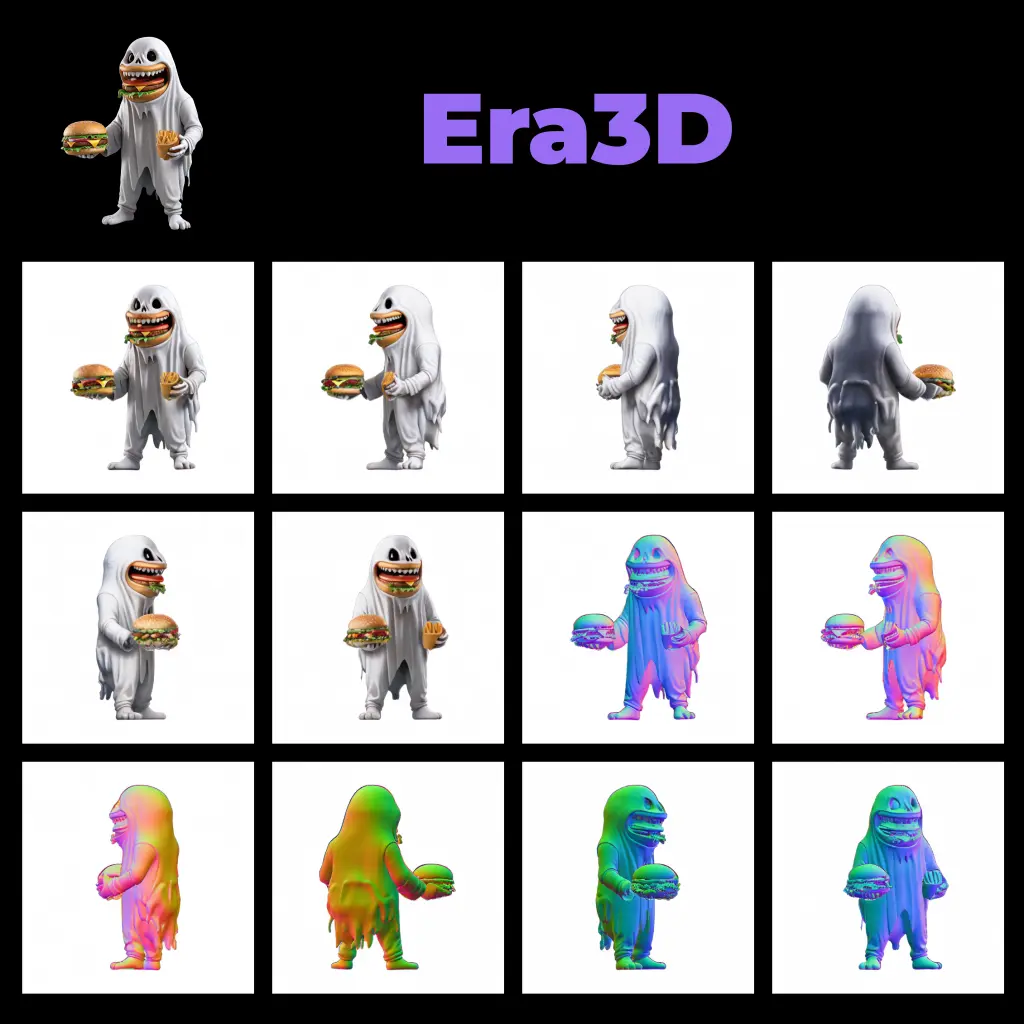ComfyUI Node: Easy Apply BrushNet
easy applyBrushNet
CategoryEasyUse/Inpaint
yolain (Account age: 1625days) Extension
ComfyUI Easy Use Latest Updated
2025-03-30 Github Stars
1.46K
How to Install ComfyUI Easy Use
Install this extension via the ComfyUI Manager by searching for ComfyUI Easy Use- 1. Click the Manager button in the main menu
- 2. Select Custom Nodes Manager button
- 3. Enter ComfyUI Easy Use in the search bar
Visit ComfyUI Online for ready-to-use ComfyUI environment
- Free trial available
- 16GB VRAM to 80GB VRAM GPU machines
- 400+ preloaded models/nodes
- Freedom to upload custom models/nodes
- 200+ ready-to-run workflows
- 100% private workspace with up to 200GB storage
- Dedicated Support
Easy Apply BrushNet Description
Integrate BrushNet model for advanced image inpainting with precise brush effects.
Easy Apply BrushNet:
The easy applyBrushNet node is designed to integrate the BrushNet model into your AI art workflow, enabling advanced inpainting capabilities. This node leverages the BrushNet model to enhance images by applying specific brush effects, guided by a mask and other parameters. It is particularly useful for artists looking to refine or alter specific areas of an image with precision. By using this node, you can achieve more detailed and controlled modifications, making it an essential tool for high-quality image editing and inpainting tasks.
Easy Apply BrushNet Input Parameters:
pipe
This parameter represents the pipeline containing the model, VAE, and conditioning information. It is essential for the node to access the necessary components to apply the BrushNet model effectively.
image
The image parameter is the input image that you want to modify using the BrushNet model. This image serves as the base for the inpainting process.
mask
The mask parameter defines the areas of the image that will be affected by the BrushNet model. It allows you to specify which parts of the image should be altered, providing precise control over the inpainting process.
brushnet
This parameter specifies the BrushNet model to be used. It can be a cached model or a new one loaded from the specified path. The BrushNet model determines the brush effects applied to the image.
dtype
The dtype parameter defines the data type for the BrushNet model. Options include float16, bfloat16, float32, and float64. The default value is float16, which balances performance and precision.
scale
The scale parameter adjusts the intensity of the brush effects applied by the BrushNet model. It ranges from 0.0 to 10.0, with a default value of 1.0. Higher values result in more pronounced effects.
start_at
This parameter specifies the starting point for the inpainting process, measured in pixels. It ranges from 0 to 10000, with a default value of 0. It allows you to control where the BrushNet model begins applying its effects.
end_at
The end_at parameter defines the endpoint for the inpainting process, measured in pixels. It ranges from 0 to 10000, with a default value of 10000. It allows you to control where the BrushNet model stops applying its effects.
Easy Apply BrushNet Output Parameters:
pipe
The output pipe parameter returns the updated pipeline after applying the BrushNet model. It includes the modified image and any updated conditioning information, ready for further processing or final output.
Easy Apply BrushNet Usage Tips:
- Ensure that the mask parameter accurately defines the areas you want to modify to achieve precise inpainting results.
- Experiment with different scale values to find the optimal intensity for the brush effects, depending on the desired outcome.
- Use the start_at and end_at parameters to control the specific regions of the image where the BrushNet model is applied, allowing for targeted modifications.
Easy Apply BrushNet Common Errors and Solutions:
BrushNetLoader not found,please install ComfyUI-BrushNet
- Explanation: This error occurs when the BrushNetLoader class is not found in the node mappings, indicating that the ComfyUI-BrushNet package is not installed.
- Solution: Install the ComfyUI-BrushNet package to ensure that the BrushNetLoader class is available for use.
Invalid brushnet model path
- Explanation: This error occurs when the specified brushnet model path is invalid or the model file is not found.
- Solution: Verify that the brushnet model path is correct and that the model file exists at the specified location.
Unsupported dtype value
- Explanation: This error occurs when an unsupported data type is specified for the dtype parameter.
- Solution: Ensure that the dtype parameter is set to one of the supported values:
float16,bfloat16,float32, orfloat64.
Easy Apply BrushNet Related Nodes
RunComfy is the premier ComfyUI platform, offering ComfyUI online environment and services, along with ComfyUI workflows featuring stunning visuals. RunComfy also provides AI Playground, enabling artists to harness the latest AI tools to create incredible art.

